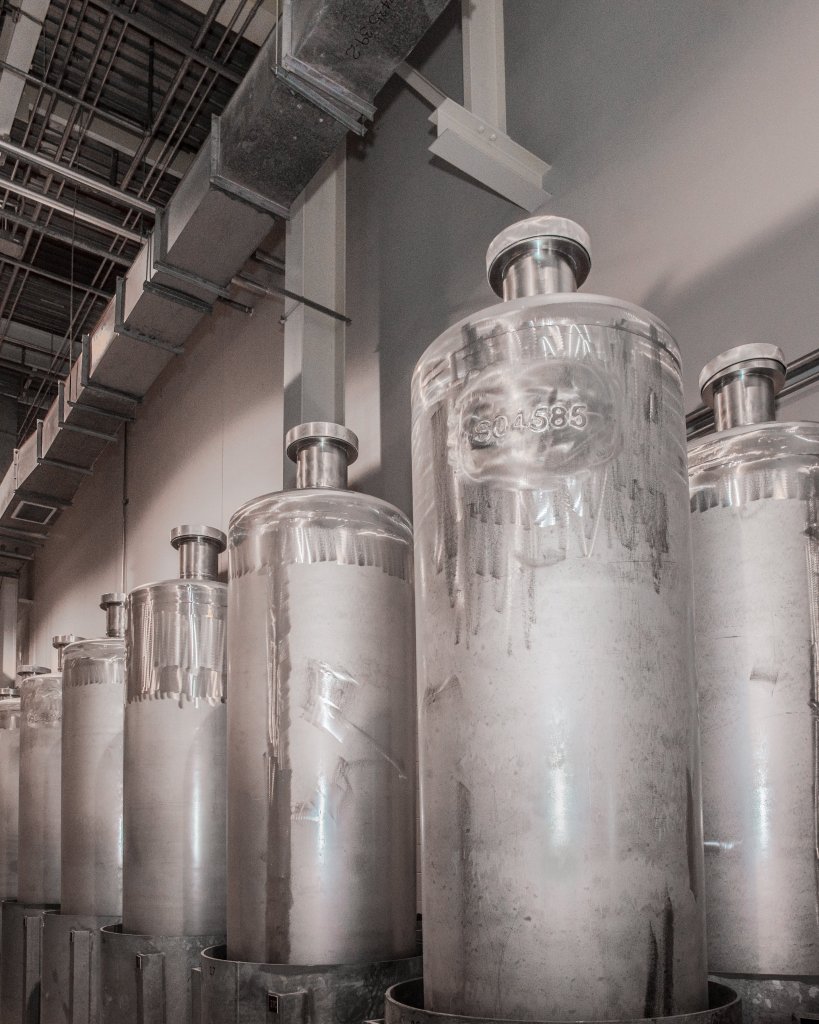SRNL Upgrades Modeling Software to Improve Nuclear Waste Processing
Decades of plutonium production at Savannah River Site (SRS) resulted in millions of gallons of high-level waste. Over the years, Savannah River National Laboratory (SRNL) has played a vital scientific role in developing ways to safely process this waste. The Defense Waste Processing Facility (DWPF) at SRS has made tremendous progress processing the “sludge” waste into a glass waste form, which is placed into large, stainless-steel canisters for safer, long-term storage. Savannah River Mission Completion (SRMC), the liquid waste contractor, asked SRNL Chemical Flowsheet Development researchers, led by Senior Fellow Engineer Michael Poirier, to evaluate the behavior of potentially dangerous hydrogen gas in the sludge waste.
“There’s a concern with hydrogen being generated in the tank farm and DWPF because of radiolysis – radiation … we have difficulty quantifying the rate at which it is released,” said Poirier. “So, we make very, very conservative assumptions … this narrows our operating window for facilities.”
Poirier spoke to Richard Grenville, one of the world’s foremost experts on fluid mixing, about the sludge hydrogen issue. Grenville recommended a commercially available software, M-Star® Computational Fluid Dynamics, to model the rate of hydrogen release from the sludge. Poirier then contacted the software company, who ran a simulation that looked promising. In turn, Poirier conducted his own simulations using M-Star®, and the results were in close agreement with experimental data from tests run during sludge batch qualification tests in shielded cells.
While the results were encouraging, the software was classified as “QA level D,” which is not sufficient to perform nuclear safety calculations. The software needed to be upgraded to “QA level A,” software whose results are used to make decisions that could result in death or serious injury or are part of the evaluation in accident analysis. Poirier’s team performed a series of increasingly complex simulations that compare results with classic physics problems and applications specific to SRS, not only for hydrogen release but also mixing of “non-Newtonian” fluids like the sludge. The results of the work were reviewed by SRNL technical experts, SRNL management, SRNL QA, and SRMC. This allowed the software to be upgraded to the QA level A classification.
The software has myriad advantages over direct sludge sample testing. “You generate a lot of waste, you have lot of volume,” said Poirier. “There are issues with scaling the test results to DWPF process vessels … the software is a tool that eliminates a lot of those.”

Empty canisters waiting to be filled with Vitrified Sludge Waste at the Defense Waste Processing Facility.
Sean Noble, a researcher on Poirier’s team, highlighted the work as his SRNL Research SLAM topic, which was awarded the best presentation in the Environmental Resilience category at the National Research SLAM on Nov. 15 in Washington, D.C. Noble noted in his presentation that one of sludge mixing vessels in DWPF was not meeting its mixing power requirements, and the facility discovered that one of the vessel’s impeller blades had broken off. Poirier and Noble used M-Star® to simulate the sludge mixing without the impeller blade and determined that the vessel was sufficiently mixed. On January 25, 2024, DOE notified SRMC that the seven affected containers of glass were acceptable to Use-As-Is.